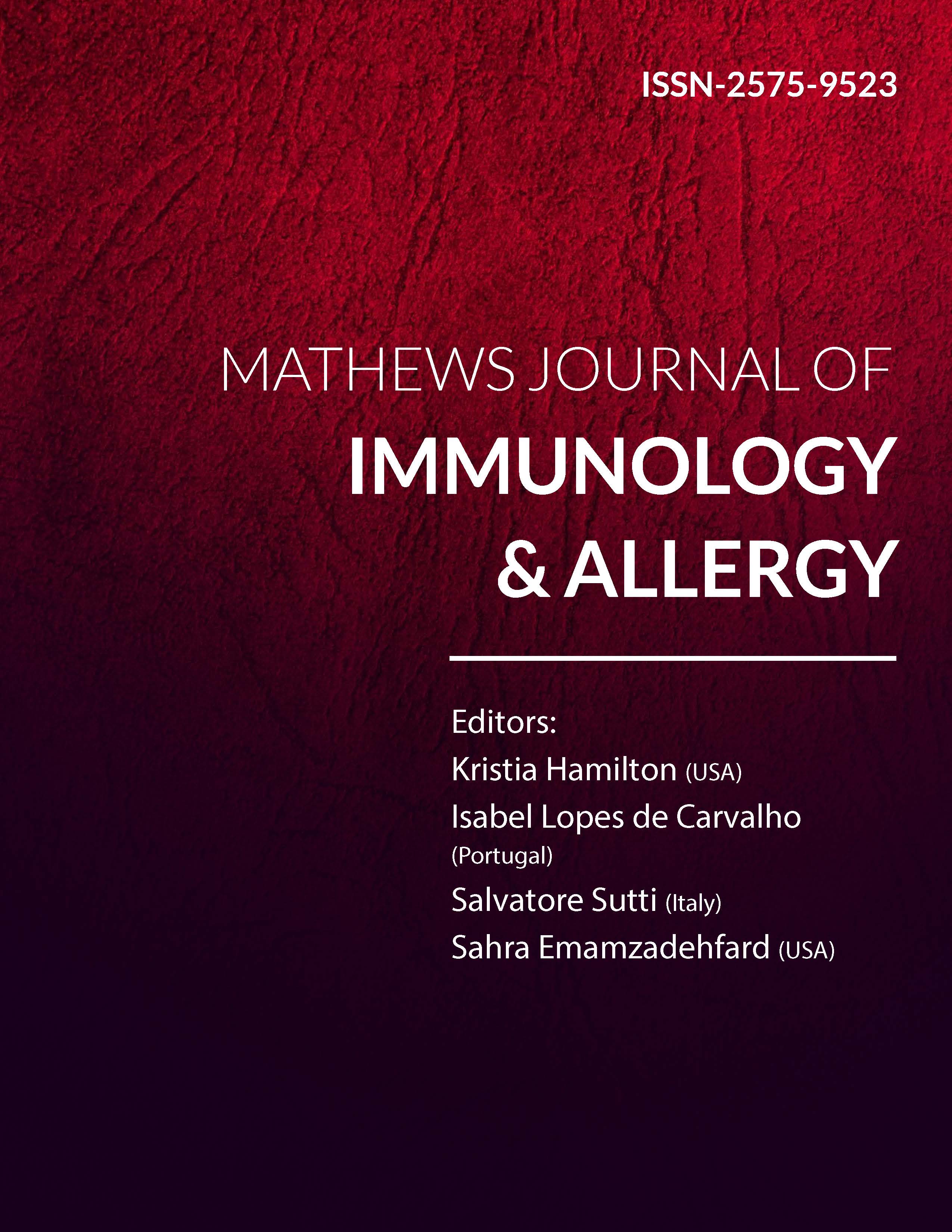
Information Links
Previous Issues Volume 1, Issue 1 - 2017
Changing Allergy Patterns in India
Akanksha Rathi1*, Saurabh Sharma2
1Assistant Professor, Baba Saheb Ambedkar Medical College & Hospital, Delhi.
2PGDHM - Senior Manager, Cure Surgicals, Delhi.
Corresponding Author: Akanksha Rathi, Assistant Professor, Baba Saheb Ambedkar Medical College & Hospital, Delhi.
Tel: +91-9911214187; E-Mail: [email protected]
Received Date: 20 Feb 2017
Accepted Date: 28 Feb 2017
Published Date: 01 Mar 2017
Copyright © 2017 Rathi A
Citation: Rathi A and Sharma S. (2017). Changing Allergy Patterns in India. M J Immu. 1(1): 003.
ABSTRACT
Allergy occurs when the immune system of a person reacts to substances that are harmless to majority of people. About 20-30% of the world's population is known to suffer from allergic disorders, such as bronchial asthma, allergic rhinitis, atopic dermatitis and urticaria. It can be easily said that allergies are increasing in both developed and developing countries for the past 10-15 years and India is no exception. The prevalence of allergic rhinitis, asthma and atopic dermatitis has increased tremendously in the Indian sub-continent and the major reasons seem to be urbanization, changing lifestyles and increasing pollution. Major steps need to be taken at both personal and government levels to curb the rising pattern of allergies.